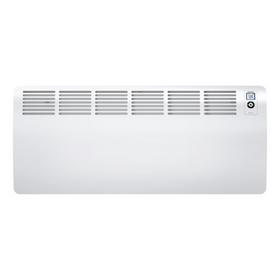
5 Ways to Use Recycled Plastic Products In Your Home
Last Updated: Feb 26, 2025Since we were in elementary school, most of us learned the "three R's" environmental ethos: reduce, reuse, and recycle. While we may separate our plastic milk jugs, water bottles, and bags, few people have any idea where those recycled plastics end up. The demand for post-consumer plastic has increased dramatically in recent years. This interest has directly led to the proliferation of several companies producing recycled plastics for the home.
Using recycled materials to produce new materials is an essential component of what is known as the "circular economy." The circular economy is a growing movement that will help our society become more sustainable by reducing our reliance on mining and extracting products from the earth. Instead, these practices will increase our dependence on existing products that would otherwise end up in a landfill or ocean.
Below, we will briefly examine the ecological costs of plastic and some of the downsides of utilizing plastics in your home. Then we will offer five ideas for how our choices in home furnishings reflect our values.
Table of Contents
- Why Do We Need to Recycle Plastics?
- Recycled Plastic Home Products
- Bottom Line
Why Do We Need to Recycle Plastics?
Plastic is a relatively inexpensive and durable material, which is one reason it has been produced en masse during the past decades. A staggering 8.3 billion metric tons of plastics have been produced since 1950. Because plastic is a stable, synthetic material, it stays in the environment for hundreds of years. From the Great Pacific Garbage Patch of plastics floating in our oceans to roadways littered with thousands of bottles, bags, and everything in between, plastic pollution is a genuine problem.
In addition, because plastics are oil-based, an enormous amount of fossil fuel energy is needed to manufacture plastic products. The Pacific Institute estimates that in 2006 alone, over 17 million barrels of oil went into American consumers' water bottles, leading to 2.5 million tons of carbon dioxide emissions. Moreover, upwards of 4 percent of the world's oil is used to make plastics. A similar amount goes toward energy for the manufacturing process.

With so many plastic products already made and still more being produced, recycling plastic trash can have positive environmental implications. For example, if all plastic trash were to be recycled, the United States could save over one billion gallons of oil each year. This would amount to a savings of up to 44 million cubic yards of landfill space. Unfortunately, plastic recycling rates are low. According to a report by Science Advances, only 9% of plastics are recycled in the US.
On the other hand, it is worth noting that the plastic products' recycling process has negative environmental impacts. Large amounts of volatile organic compounds (VOCs) are released into the air in the melting process. These emissions can lead to the release of potentially dangerous toxic chemicals like dioxins, furans, mercury, and polychlorinated biphenyls. Thus, precautions need to be taken in plastic recycling facilities to protect worker safety and limit harmful VOCs released into the atmosphere.
Recycled Plastic Home Products
But what are we to do with all of that recycled plastic? Below, we look at five post-consumer recycled plastic products for the home. The majority of these products are made from high-density polyethylene (HDPE) or polyethylene high-density (PEHD), a type of plastic with an extremely high strength-to-density ratio.

Plastic Lumber
Are you looking to build an addition to your patio? Perhaps you don't want to invest in wood beams and deck boards due to the possibility of termite infestation, wood rot, splinters, and ongoing maintenance. If so, plastic lumber is an excellent alternative for outdoor building projects. These products are made to look like regular wood lumber, and most people can only tell the difference through touch. Plastic lumber is made from HDPE plastic from recycled milk jugs and plastic grocery bags. Plastic lumber can last for several years and is naturally resistant to rot, mold, and insect infestation. Trex is one company that makes decking products by blending recycled wood and recycled plastic composites. Trex estimates that they use over 140,000 recycled plastic bags, films, and wraps for just one 500 square-foot decks.

Plastic Floor Tiles
Homeowners often favor vinyl flooring due to its ease of cleaning, low maintenance, and low cost. However, recycled plastic flooring tiles offer similar features and an extra feel-good sense to close the loop with product recycling. So what's wrong with vinyl? One recent study found that many vinyl flooring products on the market tested positive for phthalates. This toxic chemical is potentially dangerous to humans. Recycled plastic flooring tiles, such as those offered by EcoTile, tend to have lower VOC emissions than other plastic flooring options. These tiles and flooring options are manufactured from a mixture of recycled and virgin materials and are 100% recyclable.

Plastic Countertops
While granite or marble countertops are certainly aesthetically appealing, they tend to be expensive. In addition, the mining and transportation costs associated with these products have a high carbon footprint. Recycled plastic countertops sourced from post-consumer HDPE plastic are environmentally friendly and durable. They can even look like their authentic marble or granite counterparts. Durat is one company that manufactures a unique, solid surface material that contains a large percentage of recycled postindustrial plastics. Their countertops come in over 70 color schemes, and you can custom order a specialized tint that matches your kitchen ambiance.

Plastic Carpeting
Another staple home product that can be made from recycled plastics is carpeting. Plastic bottles are melted down and stretched into long, strong, and durable fibers. These fibers are then spun into unique carpeting patterns. Mohawk Flooring specializes in manufacturing a unique carpet sourced from 100% post-consumer recycled plastic. Their EverStrand brand of carpet is made from recycled PET polyester fibers that combine sustainability, stain protection, and durability. Mohawk Flooring estimates that they have used around 30 billion plastic bottles to make their recycled carpet since 1999.

Plastic Insulation Products
Melted-down plastic bottles can make a unique and high-performance insulation material. This new type of insulation will increase your home's energy efficiency while diverting large amounts of plastic trash from the landfill. In addition, the melted plastics, made into hollow fibers, maximize the insulation's ability to trap air and improve the home's thermal efficiency. In Switzerland, a company is currently working on a technique that would turn plastic bottles into insulation foam with an R-Value comparable to other commercial insulation products. In the UK, SupaSoft makes roll insulation out of recycled plastic with no added chemicals or binders.
Bottom Line
Incorporating post-consumer plastics into some areas of your home is a great way to increase the demand for plastic recyclables. Not only will this limit the need to produce virgin plastics, but it will help keep plastics out of landfills and oceans. And the more we can utilize recycled materials, the more we can close the loop and support our future circular economy.
Tobias Roberts
Tobias runs an agroecology farm and a natural building collective in the mountains of El Salvador. He specializes in earthen construction methods and uses permaculture design methods to integrate structures into the sustainability of the landscape.










